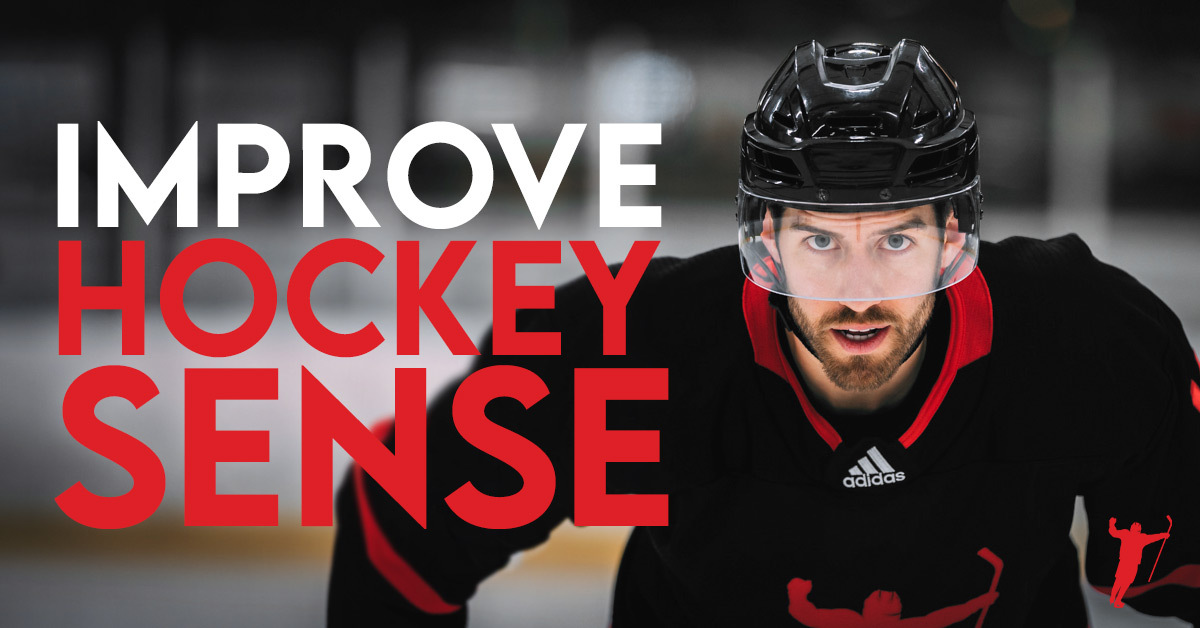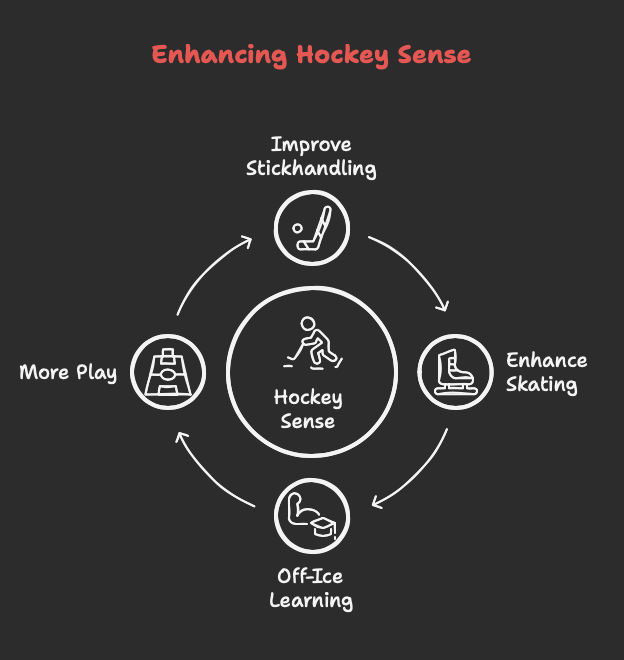Hockey Sense separates good players from great players. But do you know what Hockey Sense is or how to develop it?
First, let’s take a look at what Hockey Sense means. Then, we will dive into the different ways you can improve it.
What is Hockey Sense?
There is no set definition, but my take on it is this:
Hockey Sense measures your ability to read the play and make instinctive, optimal decisions on the ice.
Hockey Sense or “Game Sense” is nearly impossible to measure as decisions are made every second on the ice. But it’s usually easy to find players with high hockey sense.
Players with high Hockey Sense are those who:
- Position themselves perfectly to get open in the offensive zone at just the right moment.
- Make the “right” pass at critical moments.
- Execute the ideal stickhandling move needed to beat a defender.
- Anticipate plays and create turnovers by predicting where the puck will go.
They can intuitively read and react to the game with intelligence and ease, leading to consistently optimal decisions.
Hockey Sense vs Hockey IQ
Hockey Game Sense and Hockey IQ are often mistakenly used interchangeably (I have been guilty of this in the past). But there is a distinct difference between the two that’s important to understand:
Hockey Sense is about reacting instinctively in the heat of the moment, using real-time information to make the best possible play on the ice.
Hockey IQ refers to a player’s deeper understanding of the game—strategy, positioning, and systems—gained through study, experience, and learning.
Both are critical for a hockey player’s development, but Game Sense is ultimately more valuable. Here’s why:
While any player can improve their Hockey IQ by studying the game, Game Sense takes years of playing in the right environments to develop. It’s built through experience, repetition, and making split-second decisions under pressure. Game sense sets elite players apart because it allows them to react instinctively, make quicker decisions, and adapt to the ever-changing dynamics on the ice—skills that simply can’t be learned from a textbook or chalkboard.
Examples of Hockey Sense
Here’s an example sequence for a right winger off an opening faceoff to give you a further idea of when Hockey Sense is used.
The opposing team wins the faceoff back to their D-man. The player recognizes this and stays with his winger off the draw but gives some space, baiting the D-man into trying to move the puck there. When he notices the D-man look at his winger, he anticipates a pass and skates into the passing lane to intercept the pass. He scans the ice as he attacks the opposition’s blue line and reads that his centerman is driving the middle hard, pushing both d-man into retreat mode. Realizing that will open ice (space) up in the middle, he cuts into prime shooting space. Using the two defenders and his centerman as a screen, he notices the goalie standing tall, attempting to see around the players. He rips a shot five hole past the screened goalie for a goal.
This player made several great decisions that led to the goal. However, a player with lower game sense might have chased the puck off the draw (leaving his man), not recognized his teammate driving the center of the ice to anticipate the ice opening up in the high slot, and not realized what the goalie was doing on the play.
The reality is this:
Even the best players don’t always make the perfect choice, but our goal is to consistently make smart decisions more often than not.
Does Skill Play a Role in Hockey Sense?
Having high skill levels can give you an advantage in Hockey Game Sense. But being skillful doesn’t mean you will automatically have good Hockey Sense.
Think about it:
We’ve all seen a player who looks good in practice (good technical skills) but doesn’t put up numbers in games (doesn’t read and react well).
With that said:
If you have a higher skill level, you give yourself a better opportunity to improve your Hockey Sense. For example, being able to stickhandle with your head up will allow you to scan the ice more easily and find opponent teammates or locate the defenders are. And skating effortlessly will enable you to open to the ice more often and think less about what your legs are doing.
Are Players Born with Game Sense?
Some people say that Hockey Sense is something you are born with and can’t be taught. But that’s absolute B.S. if you ask me.
Genetics may play a small role in Hockey Sense. However, every hockey player has the opportunity to improve upon their game sense at any age.
Let’s dive into it…
How Do You Improve Hockey Sense?
#1 – Improve Your Stickhandling
When players think about improving their stickhandling, they often picture pulling off a flashy move to beat an opponent one-on-one. But the real benefit is how much it improves their overall Hockey Sense.
Almost every player, except for rare talents like Connor McDavid and Patrick Kane, has room to improve their puck-handling skills. But how does better stickhandling actually help your Hockey Sense?
It comes down to two key benefits:
Better Awareness
Confidence with the puck lets players keep their heads up, scan the ice, and read where teammates and opponents are moving, leading to smarter, faster decisions.
Less Panic, Smarter Decisions
Improved stickhandling reduces anxiety with the puck. Players are less likely to panic and force a pass or shot, giving them time to wait for the best play to develop.
*Check out my 2-Week Stickhandling Challenge if you’re looking to improve your stickhandling
#2 – Improve Your Skating
Skating is obviously extremely important in the game of hockey. However, not many people associate it with Hockey Sense. However, being completely confident on the ice can dramatically enhance a player’s ability to read and react to the game.
Here’s how skating ties into decision-making:
Quinn Hughes: His exceptional skating allows him to keep his head up and scan for outlet passes, even with defenders closing in. His agility ensures he can escape forecheckers with ease.
Sidney Crosby: By using the open-hip technique, Crosby keeps the ice in front of him, giving him a full view to analyze the play and make smarter decisions.
Connor McDavid, William Nylander, and Nathan MacKinnon: All regularly use quick punch turns to create extra time and space, which leads to better decision-making under pressure.
Most skating improvements happen on the ice. However, improvements in skating are limited without building strength, power, and stability in key lower-body muscles like the ankles, quads, hips, and groin. For players 12 and older, we strongly recommend following our hockey-specific dryland training programs to unlock their full skating potential.
#3 – Off Ice Learning
The next point, #4, is the most important—but this category deserves a mention because hockey players can enhance their on-ice decision-making even when they’re away from the rink.
Here’s how:
Film Study
As players get older, analyzing game footage—both their own and of higher-level players—can be transformative. Watching the game from a bird’s-eye view provides a fresh perspective and reveals strategies and patterns that can be applied during play.
Understanding Team Systems
While learning your team’s system falls under Hockey IQ, it also influences Hockey Sense. A player’s optimal decisions on the ice are always tied to their teammates’ roles. For instance, in one system, a defenseman pinching down might be the right choice, but in another, it could be a costly mistake. A player who fully understands their team’s systems can make faster, smarter decisions on the ice.
Playing Other Invasion Sports
Stepping outside hockey and participating in sports like soccer, basketball, handball, or lacrosse can improve overall game sense. These sports develop spatial awareness, timing, and strategy, which translate directly to hockey. Many NHL stars credit their multi-sport upbringing not just for physical benefits, but for the broader understanding of game flow and decision-making it fosters.
But the real secret:
#4 – More Play
The most significant factor for improving Hockey Sense is the environment in which the hockey player practices and develops.
Detroit Red Wings Director of Hockey Development, Adam Nicholas, had a good quote in a podcast that I wrote down:
“Imagine if we taught humans how to drive on an open airplane runway, and all we did was have them go around cones. That’s essentially what skill development has done over the past 20 years. They (coaches) put a bunch of things on the ice, made players go around it, and then, hey, your season’s starting. Good luck to you.”
Adam Nicholas, Detroit Red Wings via The Hockey IQ Podcast
A player can become an excellent skater and great at handling the puck going around cones on the ice. However, that won’t help them learn how to read other players, communicate with teammates, determine spacing, or learn deception.
This is based on the Ecological Dynamics approach to motor learning in sports that is starting to (rightfully so) gain some ground in hockey.
Essentially, the key is this:
The more a hockey player is in an environment that represents game situations, the more they will naturally develop all of the qualities that lead them to have the ability to make optimal decisions on the ice (aka high Hockey Sense).
Brian Slugocki, who works out of Arizona and has trained players like Auston Matthews, had a great quote:
“To transfer skills and hockey sense from practices to games, you have to train in environments that are contextually similar to the game.”
Brian Slugocki, NHL Skills Trainer
In simple terms:
If you want to get better at hockey, play more hockey.
Your hockey sense isn’t learned skating around cones or dangling through training aids. Hockey Game Sense is developed through playing games—regular team games, small-area practice games, pickup hockey, or 3-on-3 on the pond or outdoor rink.
Don’t get me wrong, I think unopposed skating and stickhandling drills (in which you don’t have an opposing player(s) forcing you to make decisions) have their place in hockey training. I just think there’s too much emphasis on them right now. Here’s why:
Skating, stickhandling, shooting, and passing can all be developed by playing the game (or game-like drills) while simultaneously developing your hockey sense.
Take a typical minor hockey player’s ice sessions over a year—they likely spend about 50% of the time playing games and the other 50% doing unopposed drills. This means half their time on the ice isn’t contributing to developing their Hockey Sense.
In my opinion, a better balance would be 80/20, favoring games or game-like drills. With this approach, players would spend 80% of their time sharpening their Hockey Sense while simultaneously improving technical skills (albeit to a slightly lesser degree). The remaining 20% could still focus on dedicated technique training, striking a more effective balance for overall development.
Plus, the reality is this:
Most of your stickhandling and shooting training can be done at home. Personally, I have made massive improvements in my puck handling through my at-home follow along sessions, with almost no additional on-ice training outside of games.
How I’d recommend structuring on-ice sessions for youth hockey players (taking games into consideration):
80% Games or Game-Like Drills: Build Hockey Sense and develop technical skills.
15% Skating/Edge Work/Coordination: Push your limits on edges and coordination—this can’t be practiced at home.
5% Stickhandling and Shooting: Minimal focus on these since they can be worked on off-ice and during games.
What this could look like as a week:
2 Games
2 Practices (50 minutes each) working on the following:
- 15 minutes of edge work and coordination
- 5 minutes of shooting/stickhandling
- 30 minutes of game-like drills
The bottom line:
Hockey sense isn’t built through endless isolated drills—it’s developed by playing the game itself. The more they play, the more they learn. Sometimes, the best thing we can do is step back and let the game teach.
Here’s how I can help:
- Start doing your stickhandling work at home using my Hockey Training TV follow-along video sessions to free up your valuable time on the ice.
- Improve your lower body strength, power, and stability using our hockey-specific workouts so you can spend less time and money on skating lessons
- Find more ways to play hockey games (pickup, outdoor rinks, stress-free environment for a change!)
- If you’re in the London, Ontario area and want to help your player improve their hockey sense and in-game decision-making, I’m planning to run a series of on-ice Hockey Sense sessions. If you’re interested, just fill out this short form to stay in the loop.
- This one is for you to help me. If you found this helpful, I’d appreciate it if you shared it with another hockey player, parent, or coach. Thank you so much!




